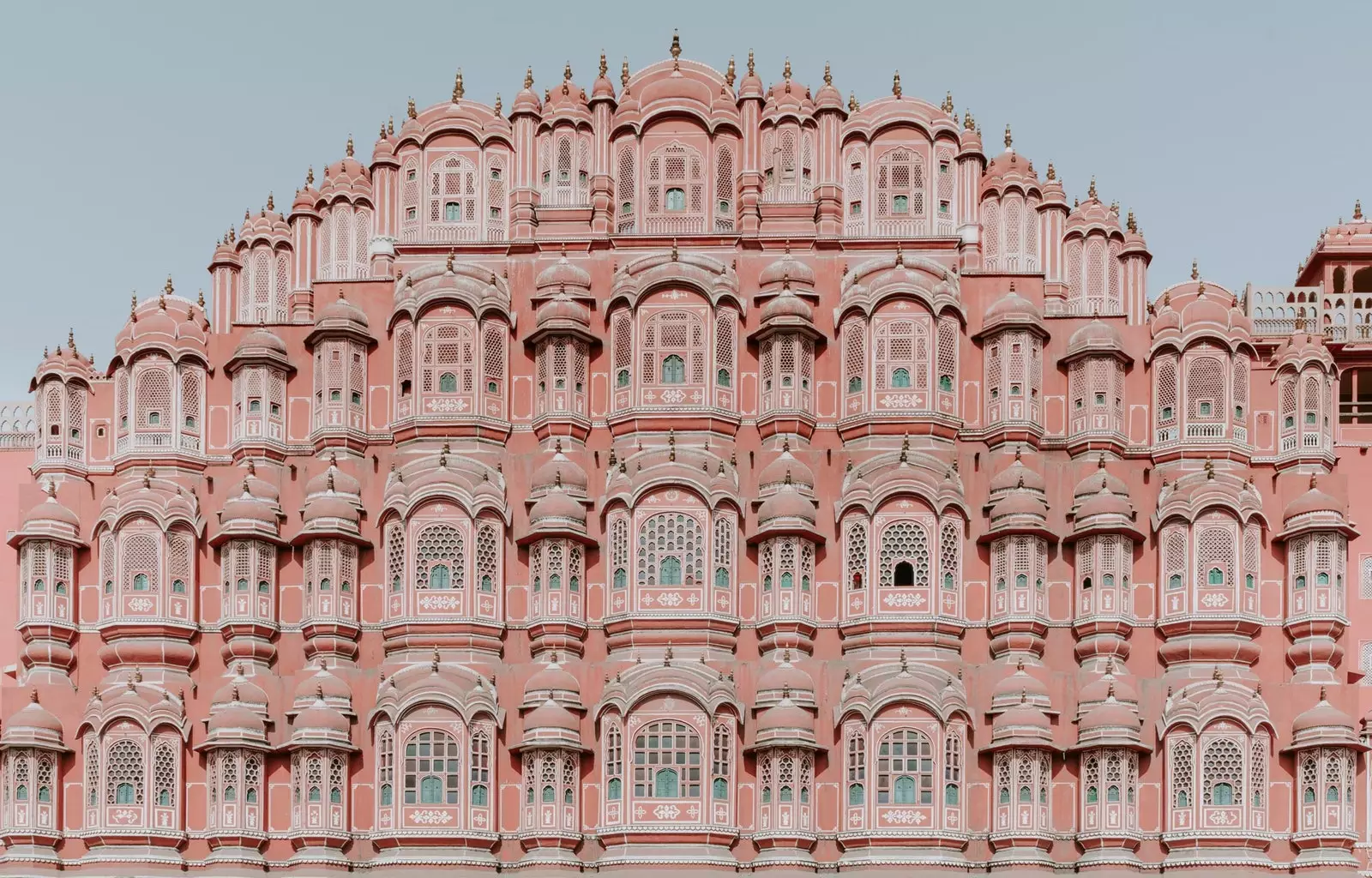
The Hawa Mahal Palace
If there is a city that perfectly represents the rise and fall of the maharajas of India, that is Jaipur.
Coquettish like no other but at the same time, gigantic and chaotic, the 'pink city' is the goose that lays the golden eggs of Rajasthan, the main tourist reference and a city, sometimes, too embellished by tourist brochures.
Even so, Jaipur exudes lavishness and poverty at a dizzying pace. Perhaps the reason is that its founder came to power at the age of 11 and, for this reason, Jaipur maintains a perfect balance between magic and science, reality and the imagined.
An astronomical observatory, one of the largest and most luxurious mansions in the country, an architecturally perfect and aesthetically beautiful city, and a bubblegum colored cinema convey the feeling that those whims of a young emperor became over time the reference of a region and a country. But we will see that later.
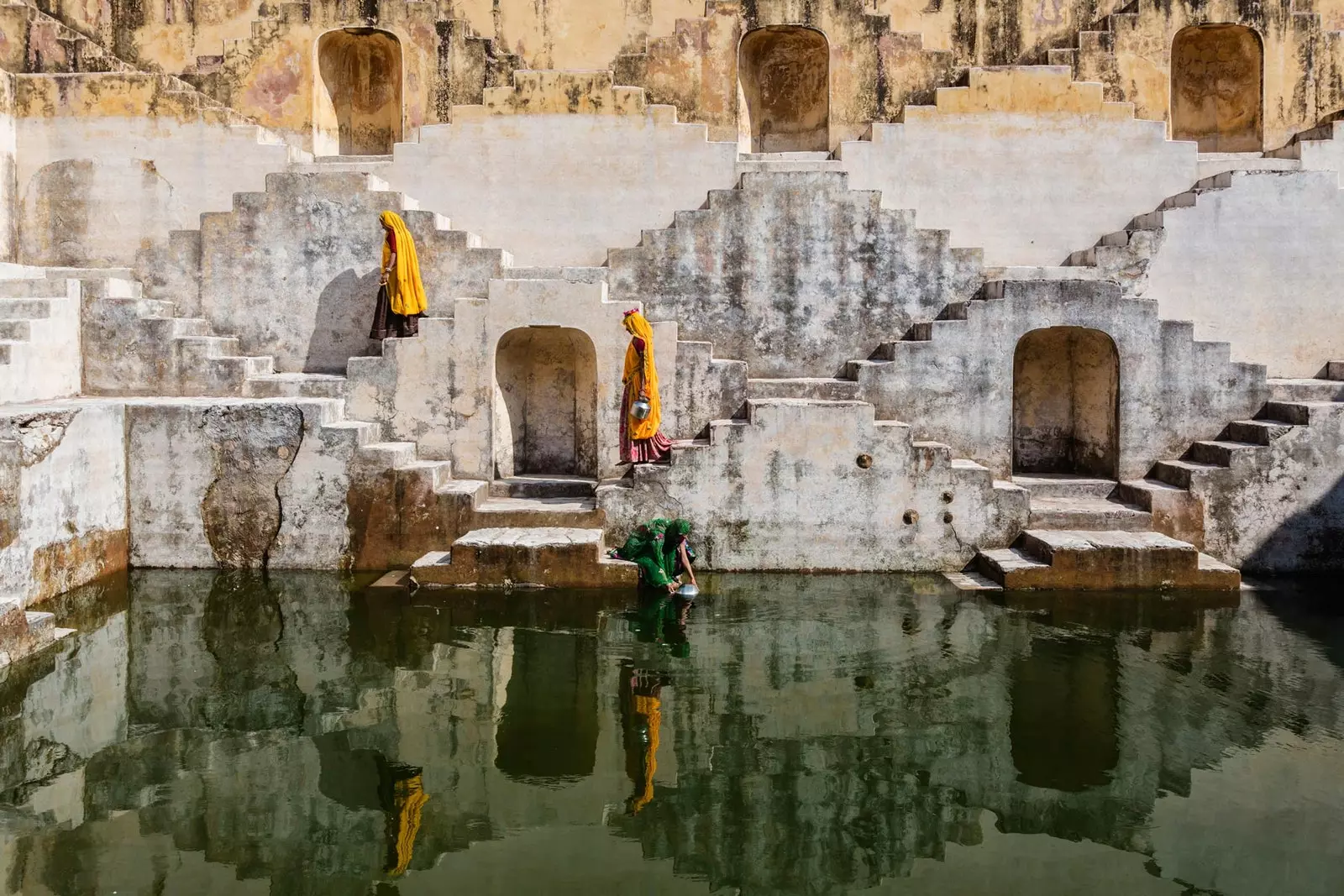
Jaipur: Architecturally Perfect and Aesthetically Beautiful
Seen through the eyes of the time, more than a city, Jaipur was an authentic stage where to capture the fairy tales that were told in the palace to that infant, Jai Singh II.
Before becoming a reality, it was a dream in the mind of a restless boy who, upon coming to power, at the end of the 18th century, from his abode in Amber where he glimpsed the whim of him rosy, ten kilometers by elephant.
In part, due to his childish creative acuity and in part, pushed by the lack of water and the need for expansion of a population that forced him to look for better lands where to develop their fantasies and give stability to its inhabitants.
Today, the 'city of Jai' has more than two million inhabitants and an enviable heritage.
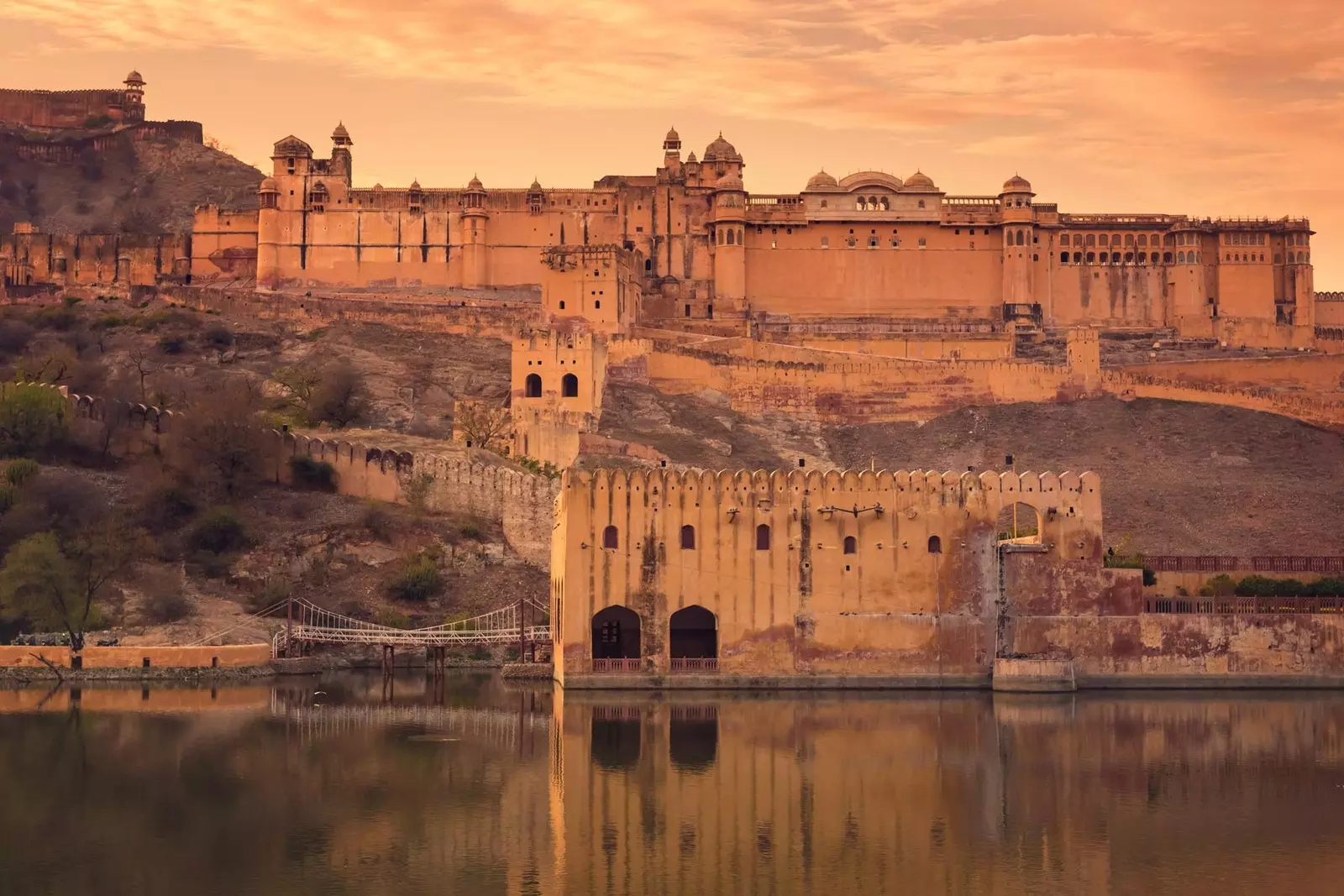
The Amber Fort, about ten kilometers from Jaipur
As well as being a warrior, Jai Singh II was restless. He loved science and applying it to everyday life. That's why he had an astronomical observatory built, named Jantar Mantar (calculation instrument), where the time and position of the stars were measured, essential information for harvests or planning weddings.
There he spent his idle hours wandering between horoscope-based labyrinths, large granite masses with different notches and mass-shaped telescopes. A complex that is still standing and, although surprising, it is not too entertaining.
A few steps away, his mansion rose. As you can imagine the result was an impressive complex of buildings, patios, gardens and rooms.
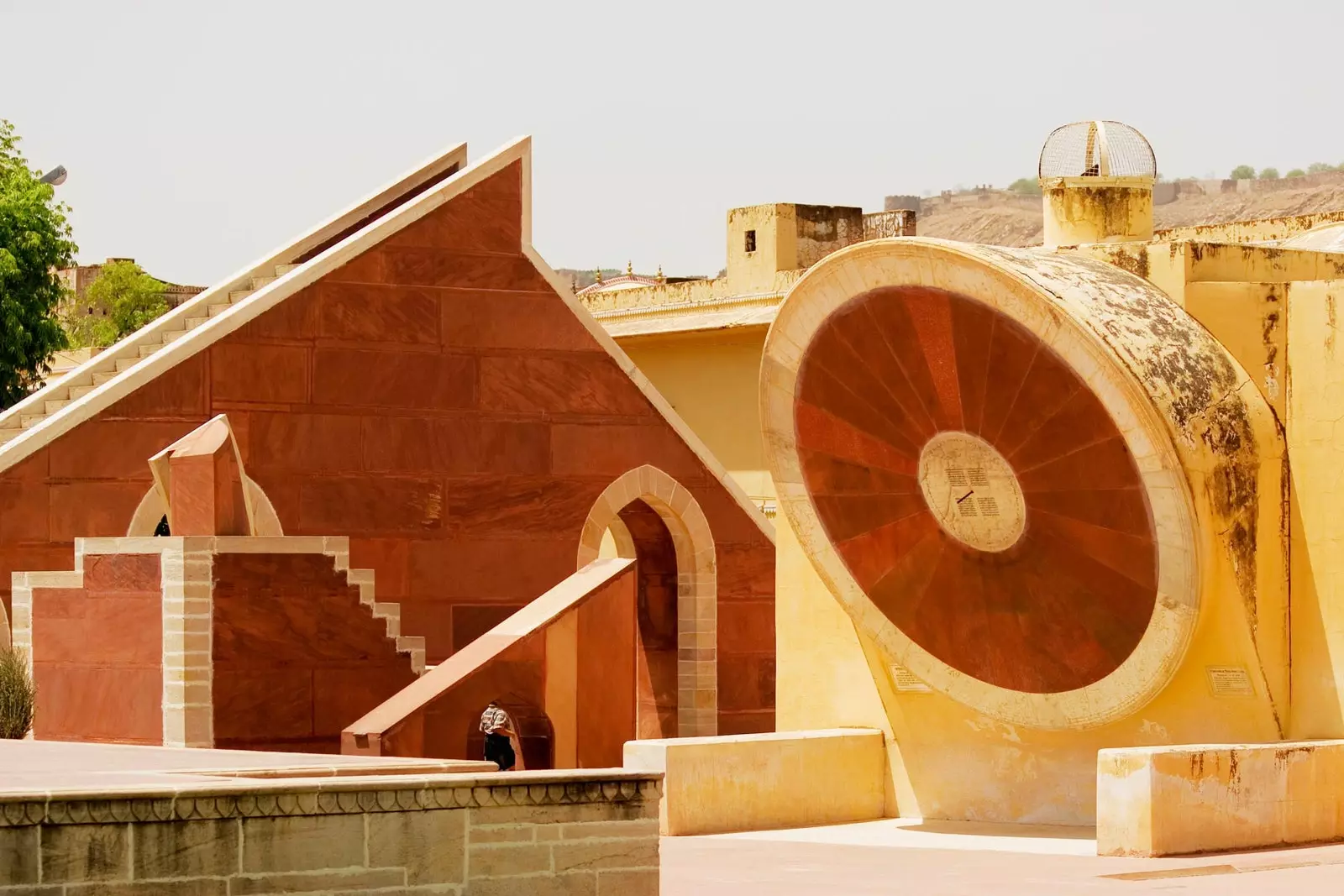
Jantar Mantar, the astronomical observatory built by Jai Singh II
Inside, today, we can find a combination of lavish cloisters with their pastel-painted facades along with museums displaying Maharajas' clothing and utensils or small workshops where they offer tourists what they say are works of art.
A visit is highly recommended, bearing in mind that, once again, India combines, and not subtly, a powerful attraction with a marketing that borders on the grotesque.
One last thing about the palace: not all rooms are open, the current royal family lives inside and occupies several buildings.
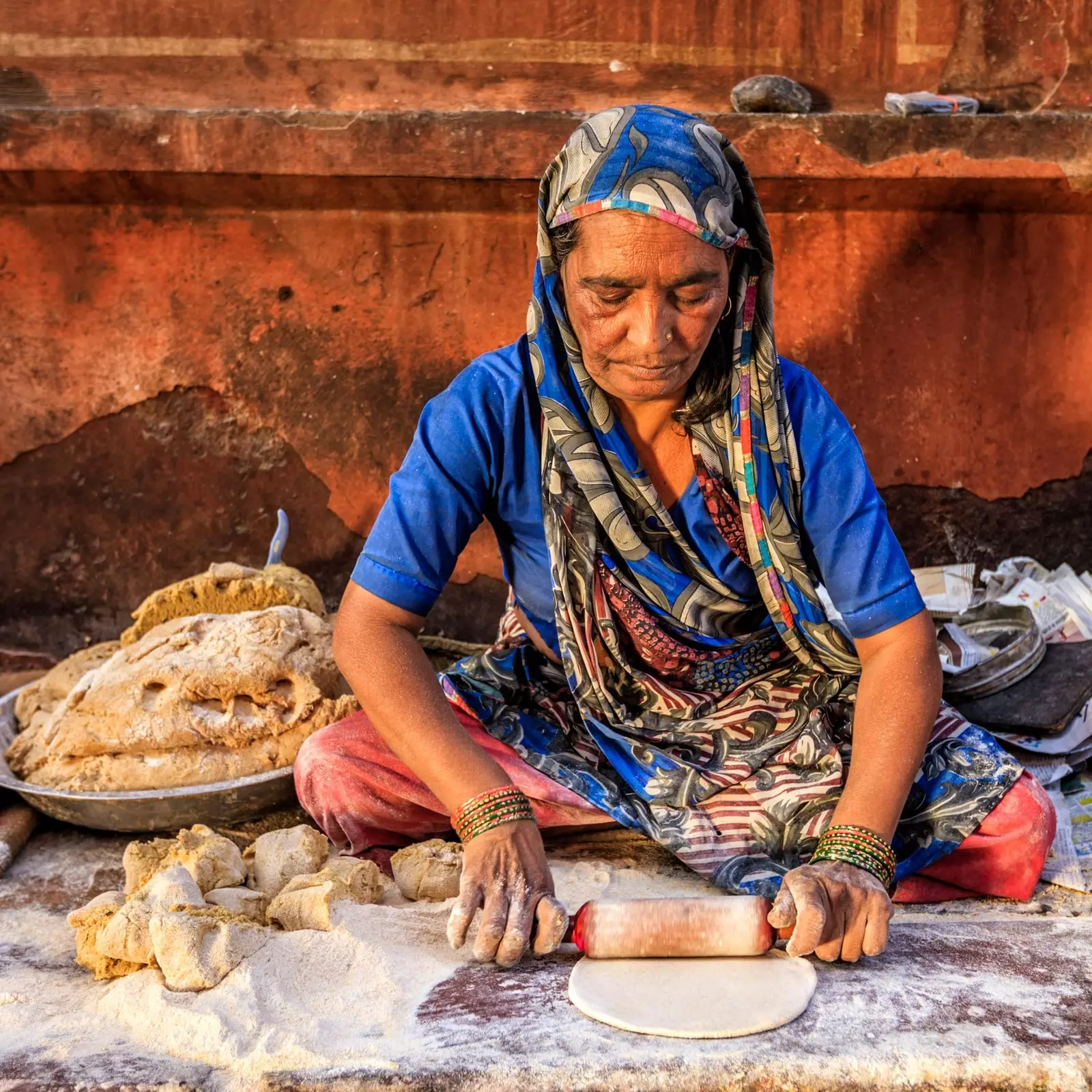
Baker in Jaipur market
Since Jai Singh II already had his house ready for him and his family, now it was necessary to find a place for the thousands of inhabitants of his reign.
With the help of the chief architect he planned a city based on a perfect symmetry resulting in the old town.
Wide avenues divide it into well-defined rectangles, each specialized in some trade. There are tons of stores selling technical books for college kids, electronics stalls, trinket stalls, food stalls, hairdressers, and high-end jewelry stores.
Luxurious and even Insulting jewelry stores beautify the M I Road, one of the biggest avenues in Jaipur. Inside, entire families choose, as if it were a ritual, the best trousseau for them.
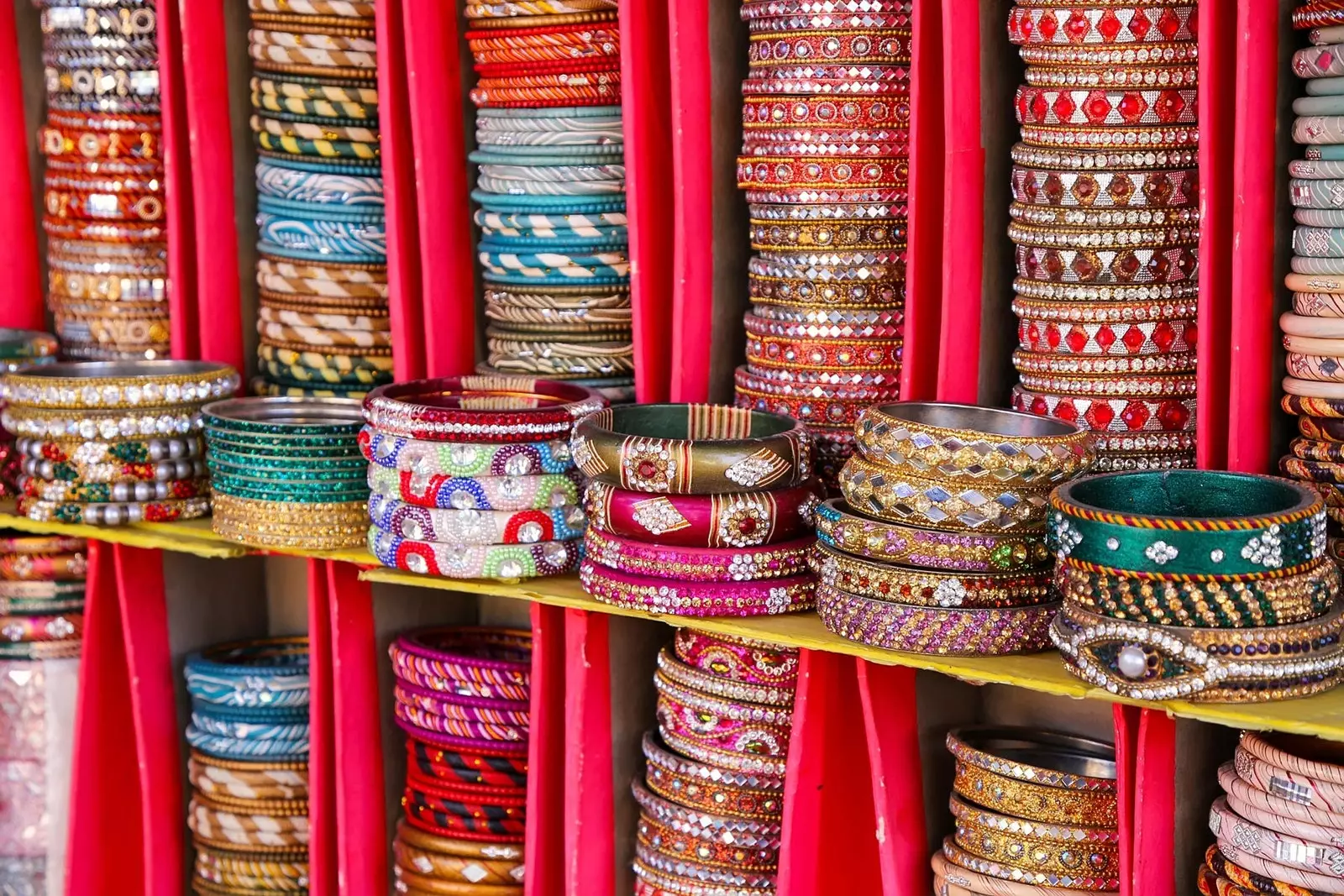
The jewels, one of the claims of the city
The bustle crosses walls. The movement of people is endless. The stores are endless. Rickshaws catch your eye every two steps. The sidewalks are occupied by motocartos that sell unlikely objects and the dirt is embedded in the baseboards and curbstones of the street.
It's crazy, a reflection of the commercial nature of a country that is a world power and whose gross domestic product grows at a rate of 6% per year. Wealth and misery go hand in hand in this kind of swarm where the worker bees have rebelled against the queen and have decided to make a life for her without paying tribute to anything or anyone.
And all that in a walled enclosure that receives the nickname of 'Ciudad Rosa', a color that conveys purity. Actually, its nickname is due to the fact that all the interior facades are painted that color, a kind of 19th-century posture.
At that time, a visit by the then Prince of Wales to Jaipur was planned. Without skimping on details, to ingratiate himself with him and give him an exorbitant show of hospitality such as he had never received before, the Maharajah at the time decided to paint the entire city pink, the color of hospitality in the Hindu tradition.
And so he remained until today. There is so much respect for that decision that it is forbidden to paint any building in the old town in another color.
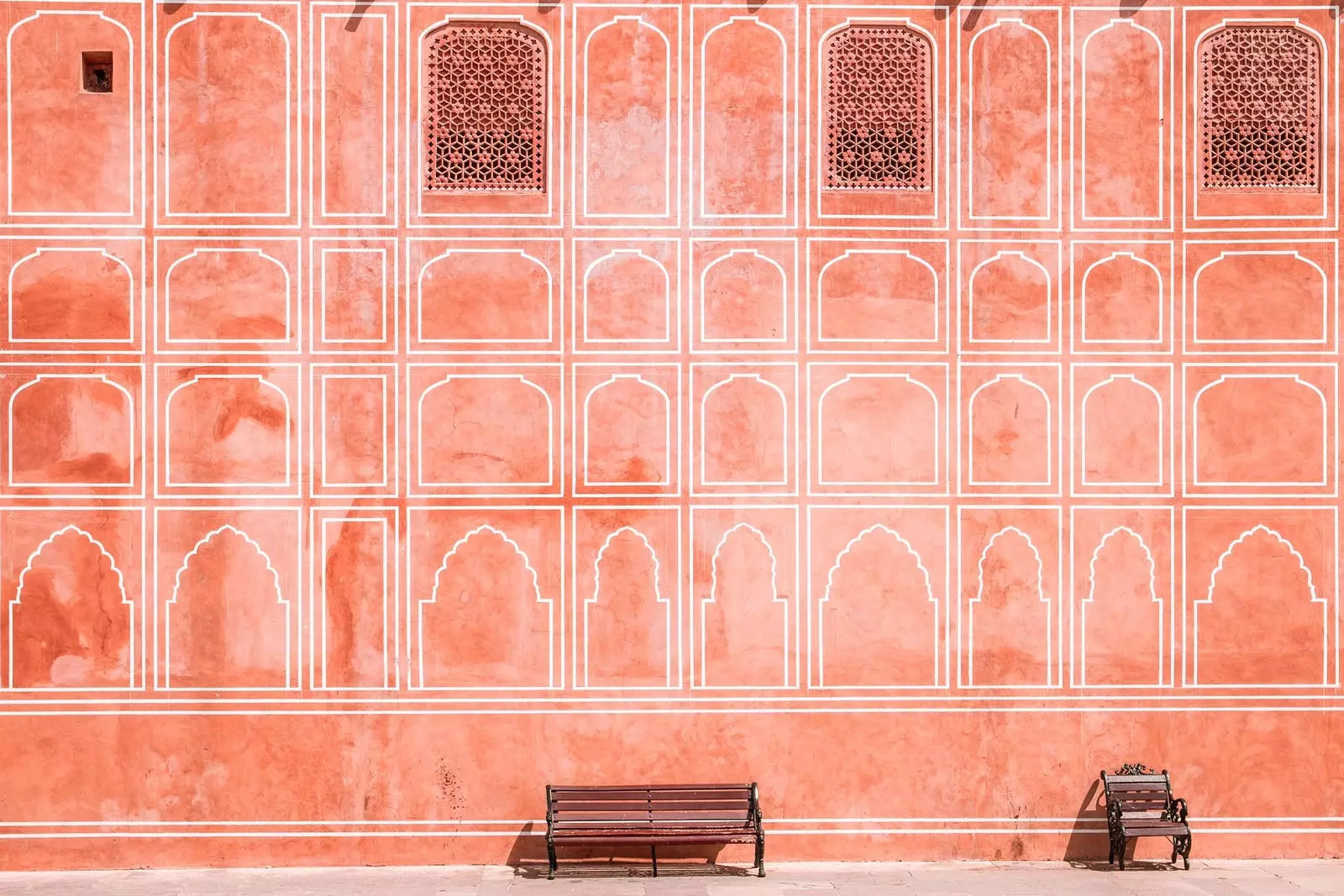
Pink, pink and more pink
Pink also shines in the Palace of the Winds. A bottomless structure of which only the façade remains.
Shaped like a fan, it was created so that the women could peer into their tiny small windows and watch the hustle and bustle of the city. Little could they see through those tiny holes and, of course, they could feel nothing of the rhythm that the streets of Jaipur transmit, pure heavy metal on 45 rpm vinyl.
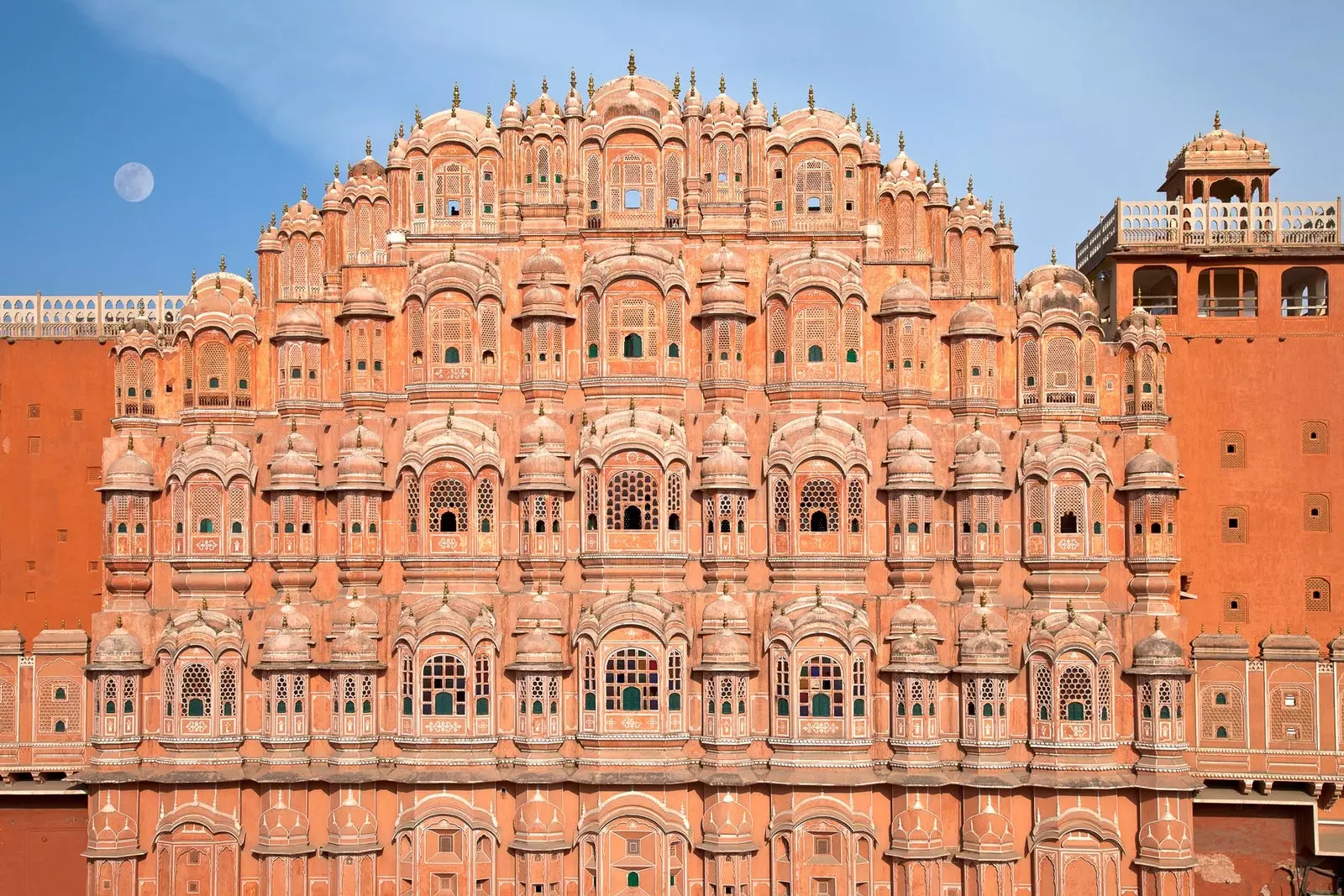
Jaipur's Palace of Winds, also known as Hawa Mahal
Out of the old town outside the walls, a city with colonial avenues, wide and diaphanous where the three lanes per direction are too small in the face of crazy traffic.
It is usual and even gratifying to check how every crash is fixed within a few minutes or witness how jams unravel with the same ease that laces undo their embrace.
On one of these avenues, next to a Burger King where they serve spicy hamburgers with curry sauce, the Raj Mandir. More than a cinema, it is a trip in a time machine to the 80s.
The smell of tobacco on the carpet, the uniformed ushers and the rococo decor are the perfect prologue to a unique show. Like the old neighborhood cinemas where for little money you could dream of a life in the Wild West or have a sneaky romance with Ava Gardner.
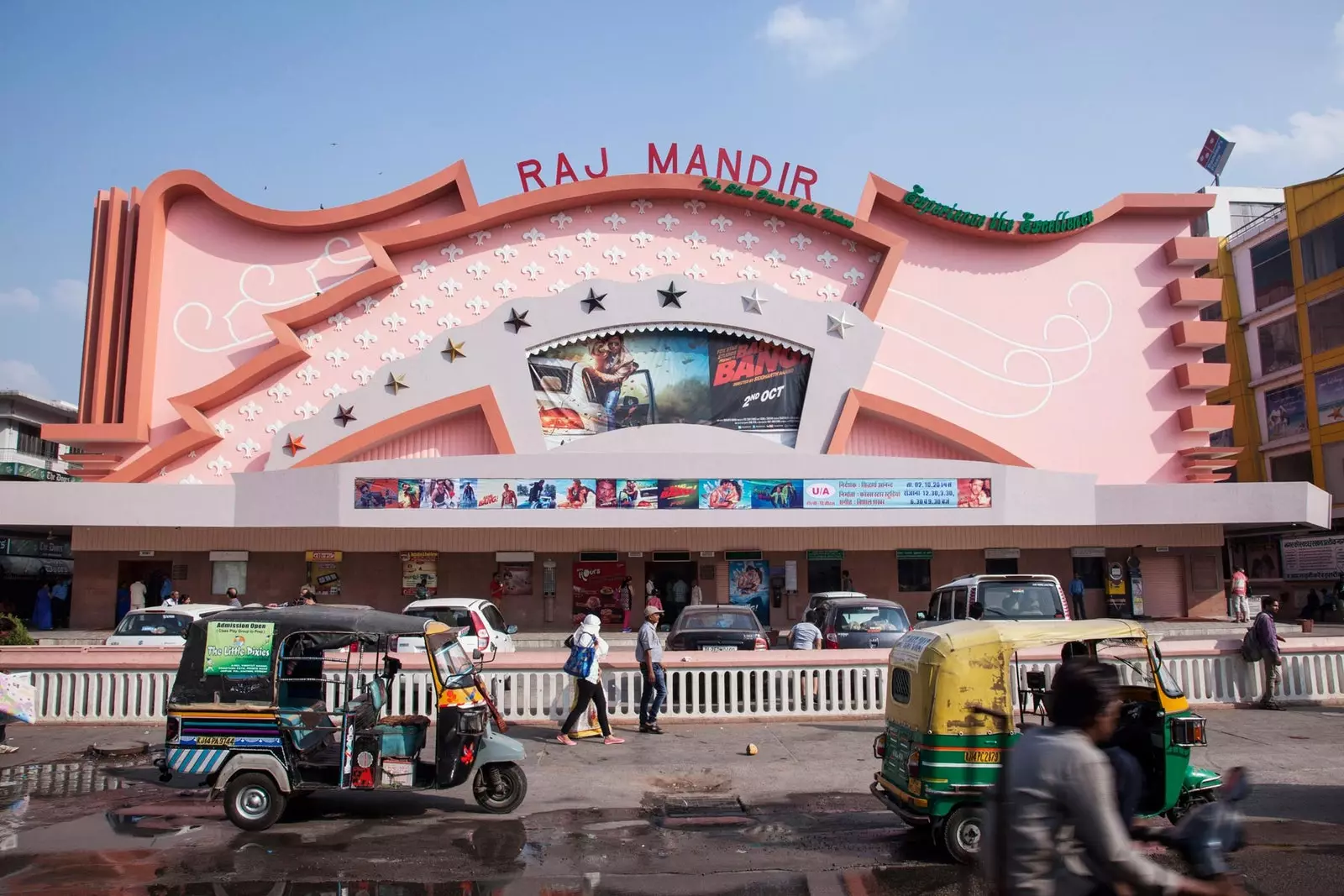
The Raj Mandir, more than a cinema, a trip to the 80s
already inside the room, without knowing a word of Hindi, the show is guaranteed. But not through the big screen on which the latest hit from the Bollywood factory is projected for more than 3 hours, but through the spectators.
Young people who savor tasty and spicy samosas, parents who jump from chair to chair to find the best place for their family, mothers who try to shut their babies' mouths. But all with a common note: they cheer the protagonists as if their lives depended on it.
The Raj Mandir alone is worth going to Jaipur. If the young Jai Singh II were alive today, surely this old and glamorous cinema would be one of his favorite places where he would find the inspiration to capture the fairy tales that his childish and creative mind imagined and then realized.
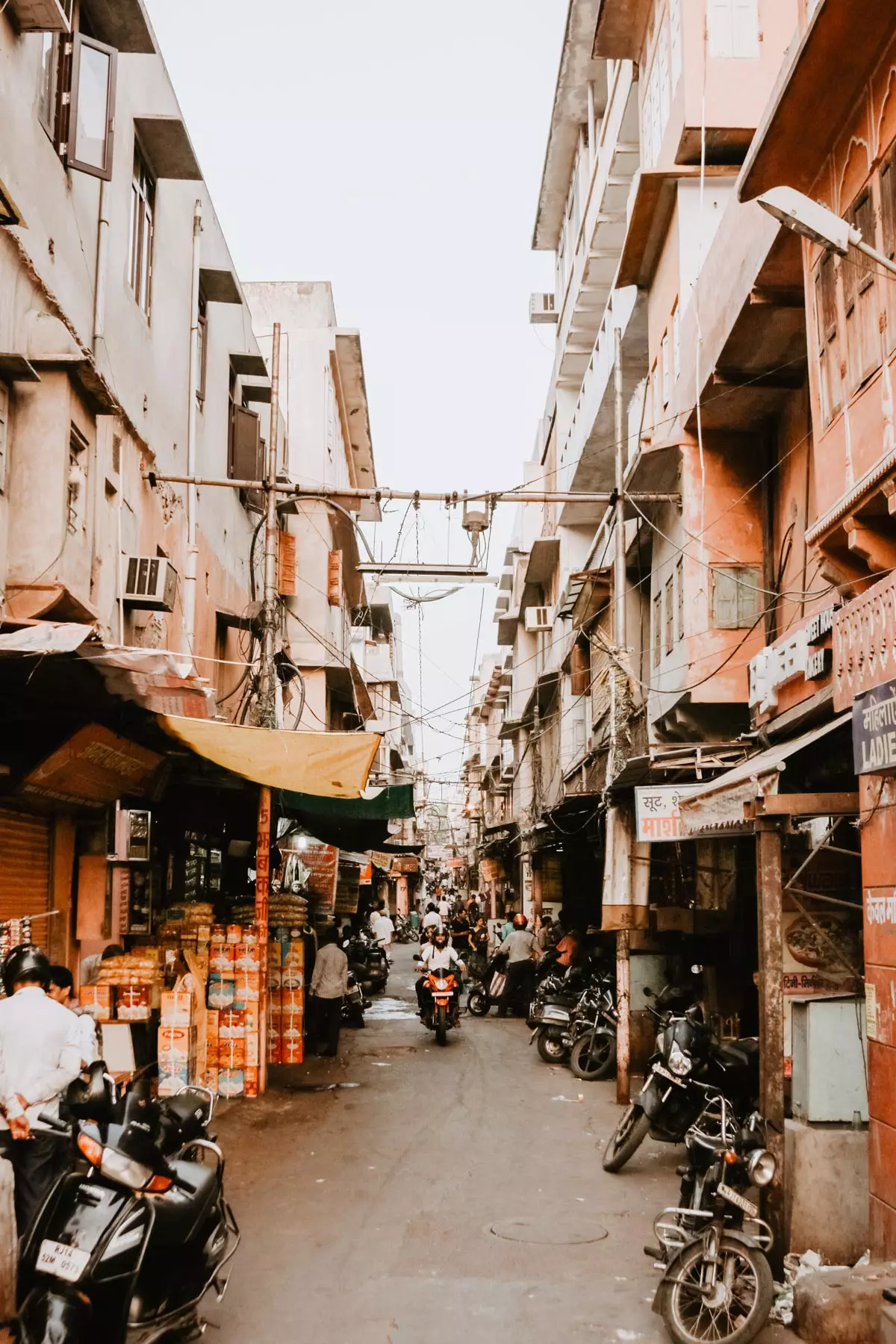
Every crash is fixed within a few minutes
follow the adventure of Travel and Rock in Traveler.es. First stop: Delhi; second stop: Udaipur; third stop: Pushkar; fourth stop: Jaipur; fifth stop: Agra; sixth stop: Varanasi .
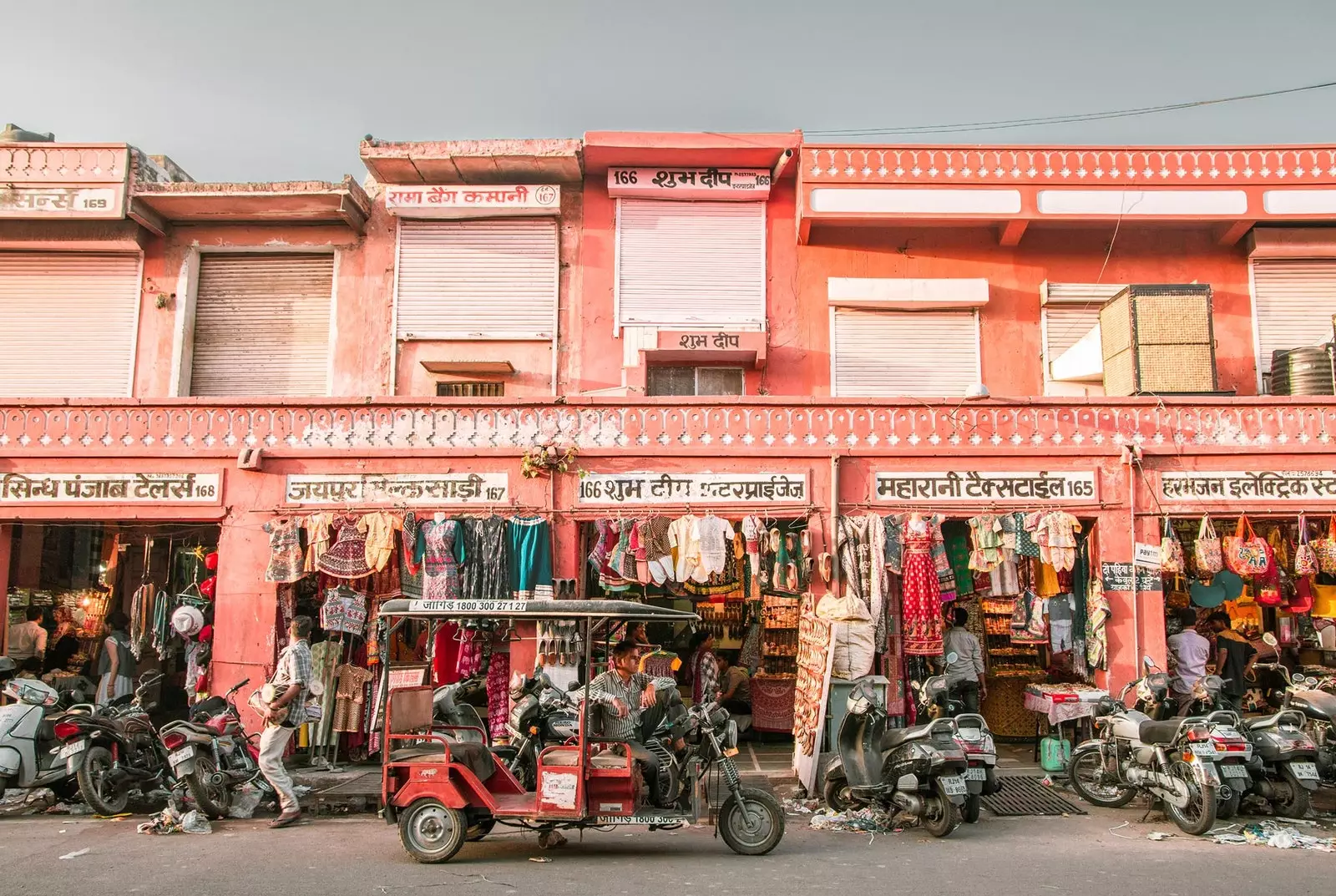
The local markets with their facades painted pink
